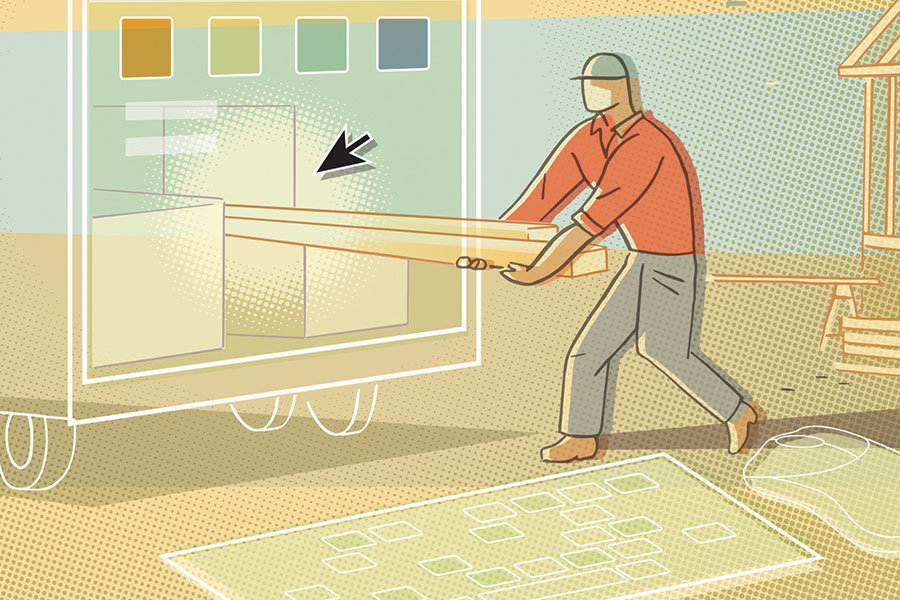Even if dealers haven’t thought much about the online threat, distributors have. “Oh yeah, this [threat of e-commerce] concerns us. We’ve been thinking about this for some time,” says Emery Waterhouse IT director Michael Horrisberger. “We do more than supply product; we support their business model. We want to be competitive. We provide a retail website for our customers, which can be a tough thing [to accomplish] if you are just one store or a small chain.”
The Portland, Maine–based distributor can help its dealer clients set up a branded online catalog that will give the dealer’s customers access to the distributor’s whole catalog of products—50,000 SKUs. Even if a dealer doesn’t carry a particular item in the store, Emery Waterhouse will ship it to the store free of charge or send it, for a fee, directly to the customer.
This past May, Do it Best Corp. launched an initiative called “It’s in Our Warehouse,” to urge dealers to consider that the company’s 67,000 SKUs are part of each member’s warehouse as well.
“In a nutshell, as a member of our co-op, [dealers] have access to our inventory,” says Do it Best communications director Randy Rusk. “It’s an extension of their backroom.” Co-op members can order through Doitbest .com or through the member’s customized website store, which is branded to the dealer.
“A lot of times, a member may walk a customer back to a peg, and it’s empty, and say, ‘I don’t have it, but I can special order it.’ Or they might say, ‘I think Home Depot or Lowe’s might have it,’” says Rusk. That might help the customer, but it gives away a sales opportunity.
“There is a lot of negativity around special ordering. Most people think that there are shipping fees or that they can’t return their purchases. Instead, we want them to say, ‘Oh, it’s not on the peg, but I have it in my warehouse, and I can have it to you in two days—either in the store or to your home.’” For instance, says Rusk, dealers could offer their customers riding lawn mowers without ever having to stock one in the store. They could market the item through special kiosks.
The “It’s in Our Warehouse” initiative offers co-op members a variety of endcap signage, posters, and shelf danglers that say, “You want it, we have it,” says Rusk. “We just started doing this and feedback has been very good.”
While no one is worried that e-commerce will make lumberyards obsolete, the value of having an e-commerce site in an increasingly virtual retail market just makes good business sense, especially for lumber dealers who can create an online shop with their distributor’s help.
“I don’t think dealerships are going to go the way of bookstores; the nature of the products would prevent that from happening,” says Emery Waterhouse’s Horrisberger. “You aren’t going to go online and buy a bunch of 2x4s.”
However, he cautioned, “a retail store now needs to know that if someone walks into the store, they have already done some Internet searching, and not necessarily at home. They may be walking down the store aisles and looking at YouTube product videos.”
Virtually Speaking
- U.S. online spending will reach $262 billion in 2013, an increase of 13.4% over last year. [Internet Retailer]
- Globally, the e-commerce market is expected to reach $1.3 trillion in 2013, a increase of 18.3% over last year’s figures. By 2016, the global market is expected to reach $2 trillion. [eMarketer]
- Traditional retailers are pulling back on square footage growth or closing stores, and investing in e-commerce. [Siemer & Associates]
- More and more people are shopping by smartphone, and 10% of U.S. adults access the Internet solely through smartphones. [Home Broadband 2013]
—Kate Tyndall is a special reports editor for ProSales.
